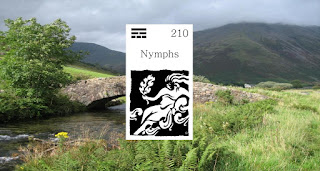In the first days of April patience and tact are needed. Mercury is still in Neptune's sphere of influence, perception is clouded, and thinking is not very clear. The Sun and Venus in Aries, however, encourage you to move forward courageously. With Mercury entering Aries on April 4, the uncertainty of the last few days will quickly disappear. Now, what has only been sensed in recent weeks may finally be spoken. However, Mercury forms a conjunction with Chiron on April 9, and at the same time Mars squares Neptune and the Moon. Aim for clear communication during this time and don't blame yourself if you have to struggle for words now and then. Unclear messages could cause considerable confusion.
Aries
There is a New Moon in Aries on April 12, and Venus squares Pluto at the same time. This is an energetically charged time when many desires want to be satisfied. Anxious procrastination makes little sense now. Whatever begins during this time could make its presence felt throughout the year. Venus enters earthy Taurus on April 14, and on April 16, the Sun squares Pluto and the Moon is close to its North Node. On April 17, Gemini Mars forms a trine to Jupiter in Aquarius, and on April 19, the Sun also enters Taurus. Some of the difficulties of the last few days can now be overcome, sometimes this is achieved in a somewhat unceremonious manner or even with determined assertiveness. Sensual pleasures should not be neglected during these days. Now you could - within the scope of possibilities - celebrate a small feast of the senses and consciously appreciate the physical aspects of life once again.
In the last third of the month, the quality of time will change significantly. Tension is on the rise again and may bring an end to carefree living yet again. Venus and Mercury form a conjunction with Uranus on April 23 and 24, Mars enters Cancer at the same time. On April 25, Venus and Mercury square Saturn in Aquarius. The desire for security now becomes great, but it is unclear where real stability can be found. It is time to take a realistic look at the developments of the previous months and to handle your own resources responsibly. Blind activism or aggressive outbursts could lead you to harm yourself.
Scorpio
Towards the end of the month, an intense Full Moon in Scorpio awaits us on April 27. The Sun and Moon square Saturn in Aquarius, and the Sun is about to make a conjunction with Uranus (on April 30). What happens during these days can hardly be ignored and can be noted as another landmark in the current transformation of society. With Pluto turning retrograde at the same time, minor or major turbulences in the stock markets or sustained shifts in power are also likely. Keep in mind at this time, that while an individual has limited influence on the larger, collective events, new paths are usually pointed out by the wisdom of individuals.














